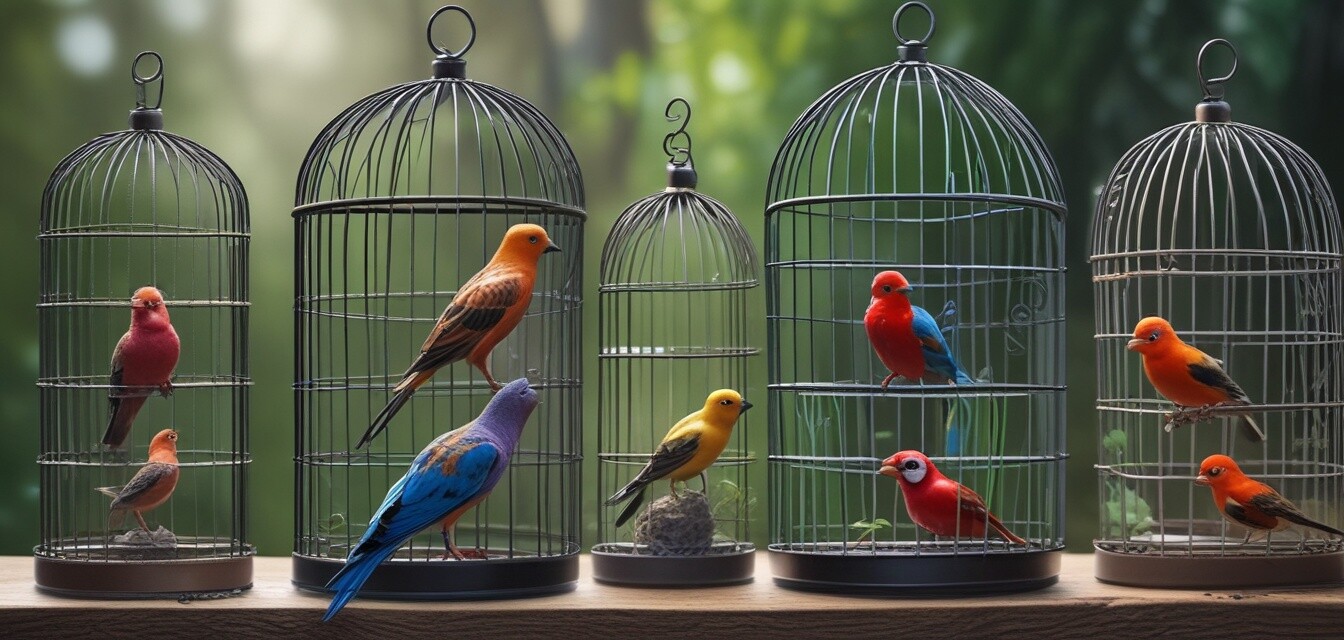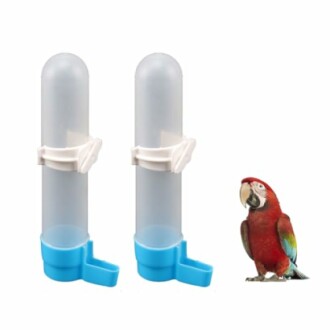
How to Choose the Best Type of Cage for Your Bird
Key Takeaways
- Consider the bird species when choosing a cage type.
- Different cage materials have distinct pros and cons.
- Assess the size and space requirements for your bird.
- Look for cages that allow for easy cleaning and maintenance.
- Ensure the cage has adequate ventilation and safety features.
When it comes to bringing a feathered friend into your home, choosing the right cage is essential. Not only does the cage serve as a safe haven for your bird, but it also provides the environment that influences their health and happiness. This guide will dive deep into the different types of bird cages, helping you select the best option based on your bird’s species-specific needs.
Types of Bird Cages
Understanding the various types of bird cages is vital to making an informed choice. Here are the most common types:
| Type of Cage | Features | Best For |
|---|---|---|
| Wire Cages | Good ventilation, easy to clean, typically larger | Most bird species including parrots and canaries |
| Glass Cages | Waterproof, easy to maintain, aesthetically pleasing | Smaller birds like finches and some exotic species |
| Travel Cages | Portable, lightweight, usually smaller | Budgies, small parrots for trips |
| Flight Cages | Large and spacious, designed for exercise | Multiple birds or larger species |
| Play Cages | Designed for interaction outside of the main cage | Any small to medium birds |
Considerations When Choosing a Bird Cage
1. Bird Species
The first thing to consider is the type of bird you have. Different species have varying needs which can drastically influence the type of cage they require.
2. Size of the Cage
The bird's size and activity level play a crucial role in determining cage size. For example:
- Parakeets and lovebirds need at least 18" x 18" x 24".
- Medium-sized birds like cockatiels require at least 24" x 24" x 36".
- Large birds, such as macaws, often need a cage that is 36" x 48" x 60".
3. Material and Safety
Cages are commonly made from metal, plastic, or glass. It's essential to choose a material that is durable but also safe for your birds. Avoid cages with toxic coatings or sharp edges.
4. Easy Cleaning
Opt for cages that have removable trays or cleaning access to make maintenance easier. A clean cage leads to a healthier bird!
5. Ventilation and Design
Ensure the cage has adequate ventilation. A well-designed cage will provide space for perches, food, and toys without overcrowding.
Product Recommendations
Automatic Water Feeder Dispenser
Ensure your birds stay hydrated with these 120ml hanging bird water bottles, perfect for parrots, budgies, and cockatiels.
Learn MoreMaintaining Your Bird Cage
Once you have selected and set up your cage, regular maintenance becomes paramount:
- Clean the cage weekly by removing all perches, toys, and trays.
- Use a safe cleaning solution to disinfect surfaces.
- Spot clean daily to address any messes quickly.
- Monitor for wear and tear, replacing parts as necessary.
Conclusion
Choosing the right type of cage for your bird is essential for their well-being and happiness. Whether you go for a wire, glass, or travel cage, remember to prioritize your bird's specific needs. A good cage ensures your friend has a safe space to thrive in. For more resources on types of birds and their care, check out our informative articles on Types of Cage Birds and Cage Bird Health and Care.
Pros
- Enhances bird comfort and health when properly sized.
- Made from various materials to suit preferences.
- Easy access for both bird and owner.
Cons
- Initial investment can be costly for quality cages.
- Some cages may require frequent cleaning.
- Not all designs accommodate all birds.
Expand Your Knowledge
For further reading, explore our guides on Cage Bird News and Trends, or learn how to Train Your Bird Effectively. To enhance your understanding of bird nutrition, check our guide on Bird Nutrition and Diet.
